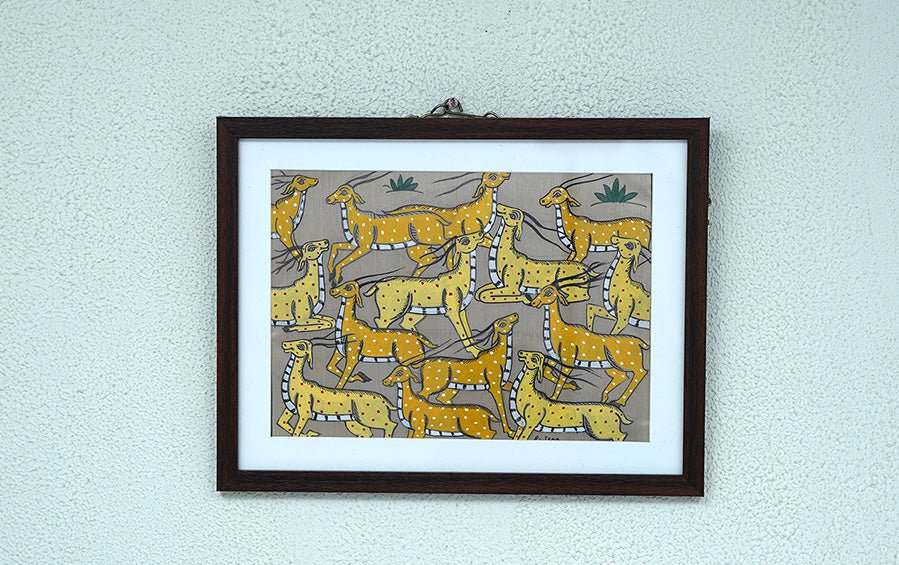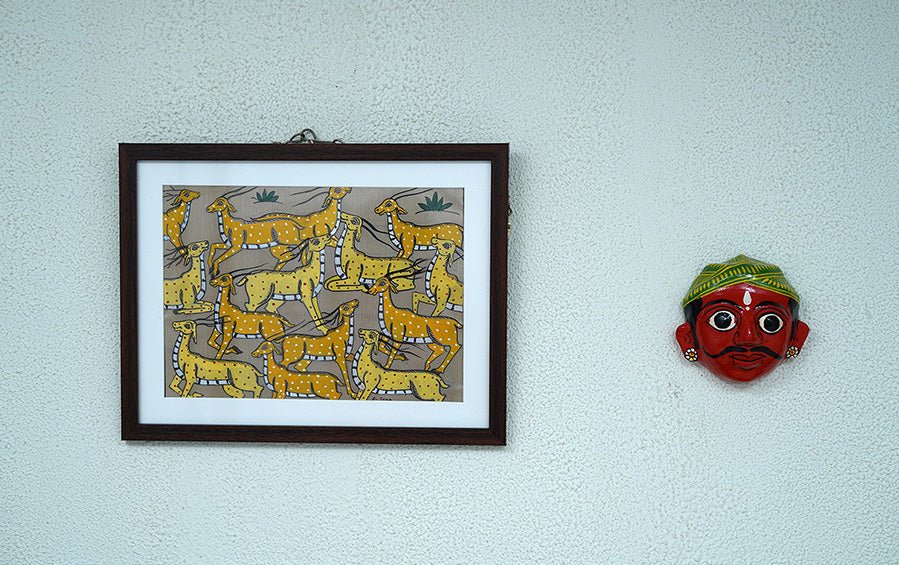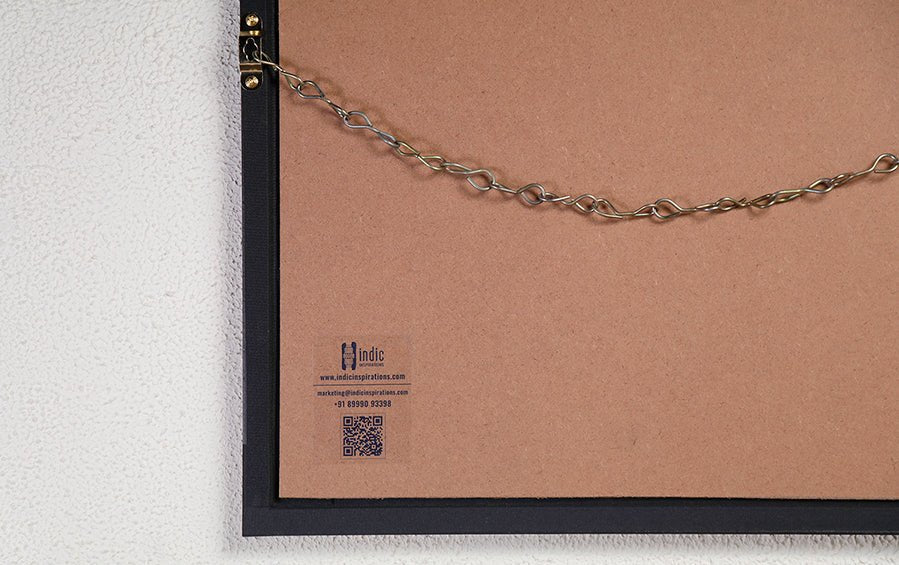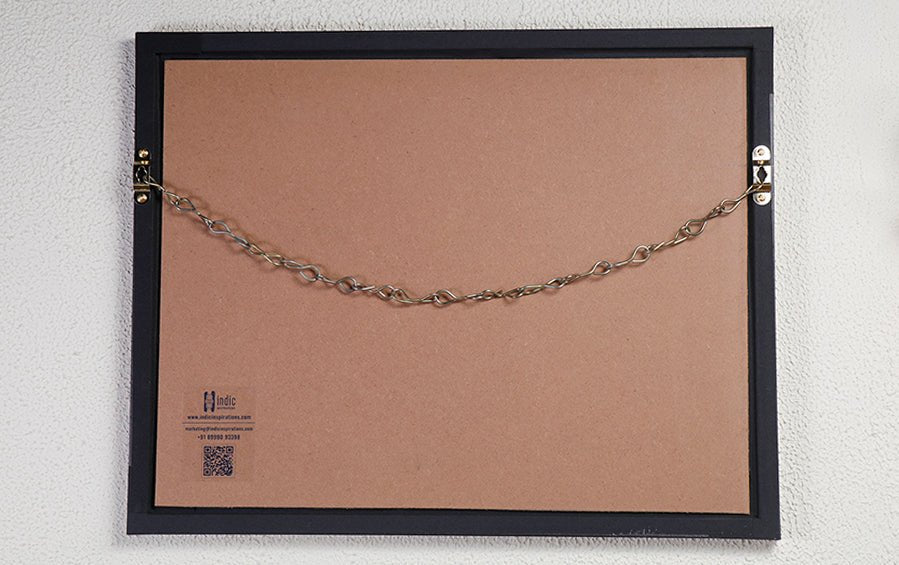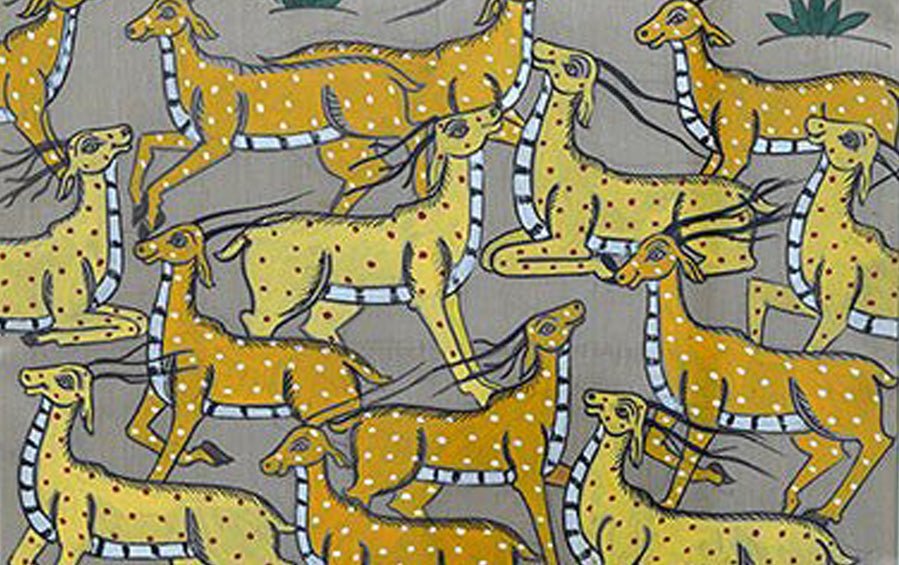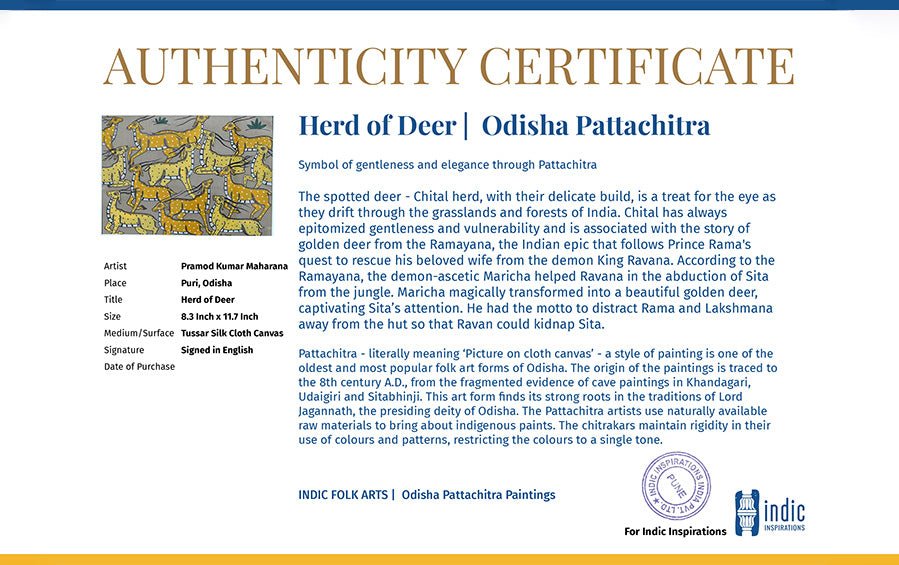Herd Of Deer | Odisha Pattachitra Painting | A4 Frame
This framed A4 size Odisha Pattachitra on tussar silk cloth depicts a herd of spotted deer, or chital - the most graceful sambar of India.
Found in dense deciduous or semi-evergreen forests and open grasslands across the country, its coat varies in colour from golden to rufous, dotted with prominent white spots. The chital is usually found in small herds. Chital herd, with their delicate build, is a treat for the eye as they drift through the grasslands and forests of India.
Chital has always epitomized gentleness and vulnerability and is associated with the story of golden deer from the Ramayana, the Indian epic that follows Prince Rama's quest to rescue his beloved wife from the demon King Ravana.
According to the Ramayana, the demon-ascetic Maricha helped Ravana in the abduction of Sita from the jungle. Maricha magically transformed into a beautiful golden deer, captivating Sita’s attention. He had the motto to distract Rama and Lakshmana away from the hut so that Ravan could kidnap Sita.
Features:
- Size: 8.3 Inch x 11.7 Inch
- Price is for framed painting.
- Handpainted in Odisha Pattachitra art style on tussar silk cloth
- Painted with natural handmade colours.
- Brass chain at the back to hang the framed painting on the wall and to make sure it stays on the wall for years to come
- Artist: Pramod Kumar Maharana
The creation of the Pattachitra paintings is a disciplined art form. The Pattachitra artists use naturally available raw materials to bring about indigenous paints. The chitrakars maintain rigidity in their use of colours and patterns, restricting the colours to a single tone.
In silk painting, the painter controls the movement of pigment within boundaries such as a resist on the silk. Brushes become much less important because the dye will move on the silk after it is placed there. Because the dyes flow so freely on silk, the job of the silk painter is to control the movement of the pigment on the silk rather than its placement. The final step is giving a protective coating. The cloth is given a lacquer coating to protect from the effects of nature and give a glazed varnished look.Painting by Pramod Kumar Maharana, a veteran Pattachitra artist of Odisha State.
